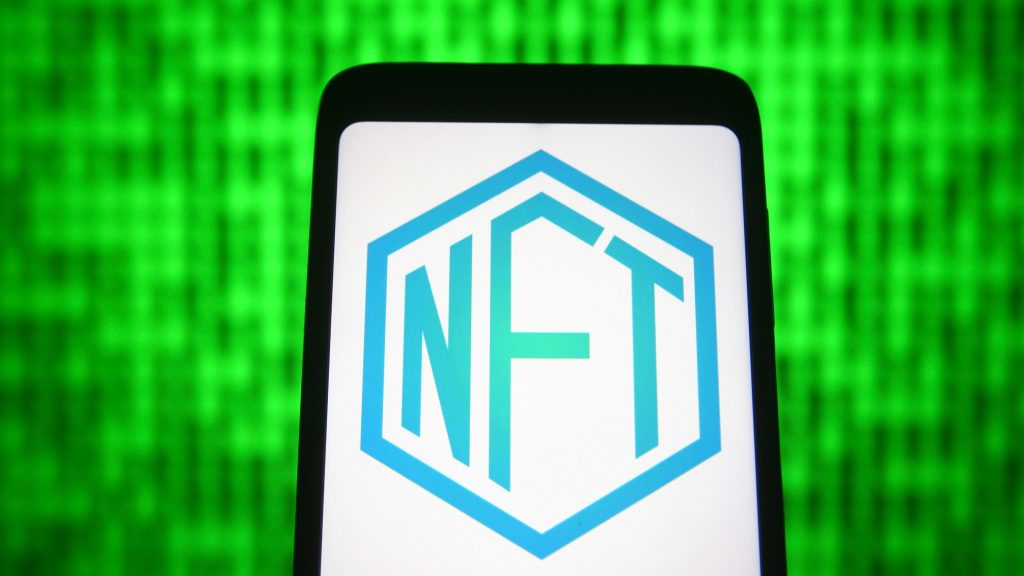NFTs are unique in that they are not subject to the same rules as other digital assets. For example, Bitcoin is limited to a total of 21 million coins, but NFTs do not have a limit on the number that can be created. This makes them ideal for representing rare or unique items, such as works of art, collectibles, game items, etc.
How do NFTs Work?
NFTs work much in the same way that traditional software licenses or asset ownership works. For instance, someone could buy a license to use Adobe Photoshop for their business. They lose access to this product when they stop paying for it. With NFTs, the license is attached to a digital token on the blockchain, which can be securely transferred to others with no expiration date.
An NFT behaves like a standard cryptographic asset with individual tokens linked to an account address. Ownership of these assets can be easily verified and transacted by any peer-to-peer network that supports exchanging NFTs. So, if you wanted to sell your NFT, you might list it for sale on a P2P marketplace (such as OpenSea) and another user could buy it using Ether or another cryptocurrency.
Types of NFTs
There are several types of Non-Fungible Tokens that have become popular over the past year or so. Here are a few of the most common:
- CryptoKitties – These are digital cats that can be bred and traded on the blockchain. The first CryptoKitty was sold for over $100,000 in December 2017.
- These are digital cats that can be bred and traded on the blockchain. The first CryptoKitty was sold for over $100,000 in December 2017. ERC721 Tokens – These are tokens that use the ERC721 standard and can be used to represent any type of digital asset.
- These are tokens that use the ERC721 standard and can be used to represent any type of digital asset. Decentraland – Decentraland is a virtual world that can be explored and traded using ERC721 tokens.
- Decentraland is a virtual world that can be explored and traded using ERC721 tokens. Non-Fungible Tokens Wiki – This is a comprehensive list of all known NFTs and their associated platforms.
How to Create an NFT?
There are a few different ways to create an NFT:
- Using an NFT Creation Tool – There are several tools available that allow you to create custom NFTs without any programming required. These tools typically require you to input some basic information about the asset you want to create.
- There are several tools available that allow you to create custom NFTs without any programming required. These tools typically require you to input some basic information about the asset you want to create. Using an NFT Protocol – If you want more control over the creation process, you can use an NFT protocol such as ERC721. This allows you to create tokens that are specific to your needs and can be used to represent any type of digital asset.
- If you want more control over the creation process, you can use an NFT protocol such as ERC721. This allows you to create tokens that are specific to your needs and can be used to represent any type of digital asset. Using an NFT Generator – There are a number of online generators that allow you to create custom NFTs by entering some basic information about the asset you want to create.
Once you have created your NFT, you will need to store it on a blockchain platform that supports NFTs. Some popular platforms include Ethereum, Bitcoin, and EOS.
Benefits of NFTs
There are a number of benefits to using NFTs:
- Security – Since NFTs are stored on the blockchain, they are secure and can be easily verified by any party. Since NFTs are stored on the blockchain, they are secure and can be easily verified by any party.
- Portability – NFTs can be easily transferred to others and are not subject to any expiration dates. NFTs can be easily transferred to others and are not subject to any expiration dates.
- Fungibility – NFTs are interchangeable and can be used for any purpose that the creator desires. NFTs are interchangeable and can be used for any purpose that the creator desires.
- Traceability – NFTs can be traced back to their original owner and can be used for audit purposes. NFTs can be traced back to their original owner and can be used for audit purposes.
- Immutability – NFTs are immune to censorship and cannot be altered or tampered with.
Disadvantages of NFTs
There are a few disadvantages to using NFTs:
- Complexity – The use of NFTs can be quite complex for those who are not familiar with blockchain technology. The use of NFTs can be quite complex for those who are not familiar with blockchain technology.
- Limited Functionality – NFTs are still in their early stages and have limited functionality at the moment. However, this is likely to change as more platforms supporting NFTs are released.
The use of NFTs offers a number of advantages and disadvantages, but they are still in their early stages and there is likely to be a lot of changes over the coming years.
